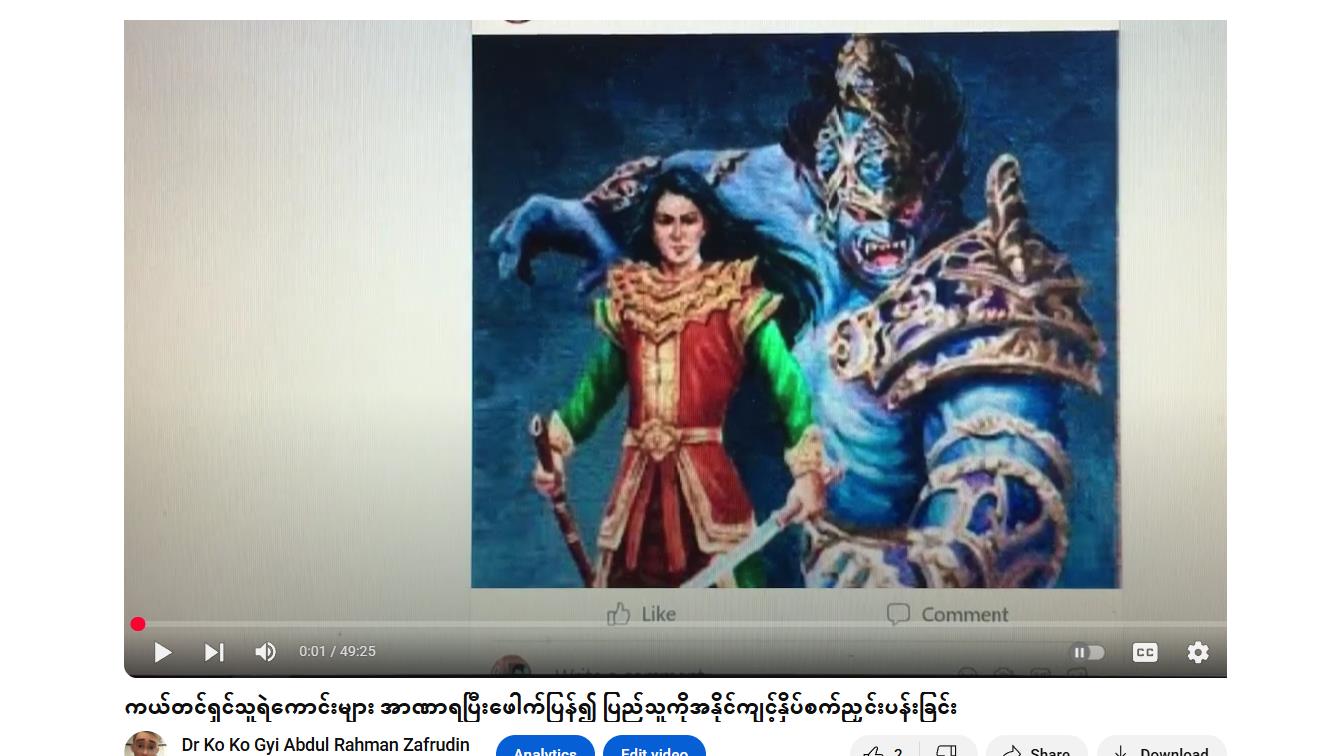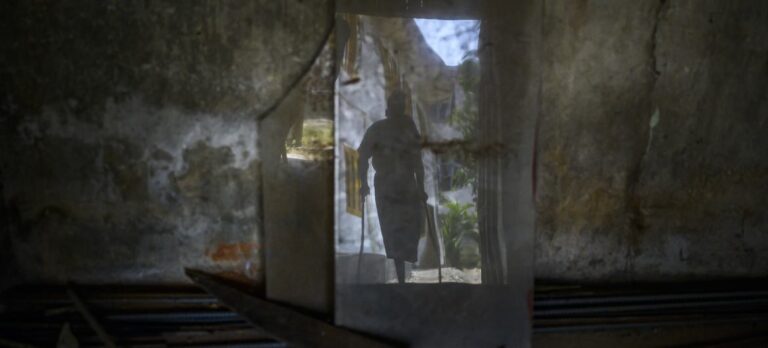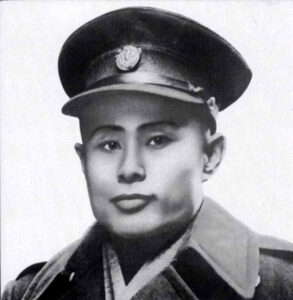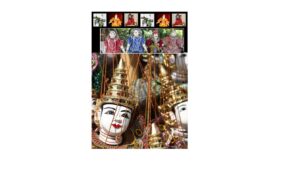By SHWE BA (Dr Ko Ko Gyi’s Pseudonym)
Once upon a time in a remote corner of Burma, there was a peaceful village known as Shwe Bama. The villagers lived in fear, constantly harassed by a terrifying beast from the nearby forest. Day and night, they prayed for a hero—a savior who would rid them of the terror.
Their prayers were answered when a noble prince arrived, offering his services out of compassion. He bravely fought and slew the beast. Grateful, the villagers showered him with gifts and even offered him the right to rule over them. But one day, the prince vanished without warning. And, to their horror, a new ogre appeared, worse than the first.
Then came another warrior. Armed with a spear, he too defeated the monster, only to disappear like the prince. Yet again, a similar ogre—this time wielding a spear—emerged to torment the villagers. This cycle continued: for every hero who appeared with greater strength and weapons, a new, even more terrifying beast would follow.
Eventually, the villagers began to suspect a sinister truth: the heroes themselves may have been transforming into the very monsters they once fought.
One day, a courageous village youth rose up, led his peers, and defeated the newest two-sworded monster. But this young man was wise. He asked his fiancée to keep a watchful eye on him, to remind him if ever he began to change.
During the victory celebration, the young hero disappeared. His fiancée noticed immediately and followed him. She found him in a mysterious glowing cave nearby, entranced by seductive music, golden treasures, fine food, beautiful women, and the allure of power. Drunk on success, he had unknowingly begun to transform into a monster.
But just as his face began to shift in the mirror, her voice called him back. Jolted into awareness, he broke free of the temptation. Together, the lovers destroyed the cave—the source of corruption—and returned to the village. The villagers then finally understood the truth: power without vigilance corrupts, and unchecked, it turns heroes into monsters.
From Allegory to Reality: Lessons for Myanmar
This timeless folk tale, once performed by a government-sponsored opera in the 1970s before being quietly banned, has returned to relevance in our modern context.
Myanmar’s history is full of real-life heroes who won public love, only to be slowly consumed by power:
- Daw Aung San Suu Kyi, once hailed as a global icon of democracy, became increasingly silent and complicit during the Rohingya crisis—disappointing many who once saw her as a beacon of justice.
- The Arakan Army (AA), once seen as valiant defenders of Rakhine and admired across ethnic divides, is now accused of committing brutalities against Rohingya, Chin, and other minorities, raising serious questions about their moral compass.
- In the broader world, socialists and communists, once champions against colonialism and imperialism, have in many countries morphed into authoritarian regimes suppressing dissent and human rights.
And let us not forget our own military evolution:
From BIA to BDA to Tatmadaw, Myanmar’s armed forces were once symbols of anti-colonial struggle. Yet leaders like Ne Win, Saw Maung, and Than Shwe turned them into instruments of fear and oppression—perhaps the most monstrous of all.
Time and again, the nation pins its hopes on new faces, new saviors. But unless those who rise are reminded—like the youth in the story—of their duty, humility, and the seduction of power, the same fate awaits them.
Let us hope that NLD, NUCC, PDFs, and all current resistance forces remember this lesson. Victory alone is not enough. What matters is what comes after: will they stay true to the people, or will they enter the cave and be transformed?
Moral of the Tale:
“The power that liberates, if left unchecked, can become the very force that oppresses. The only antidote is self-awareness, accountability, and the courage to walk away from the cave.”
– SHWE BA
Postscript – A Personal Reflection
As a child growing up in Mandalay, I once innocently interrupted my granduncles—U Thein Maung, a Municipal Councillor under U Nu, and U Ko Lay, part of the Ba Swe–Kyaw Nyein opposition—while they were arguing about politics in our family’s Singer sewing machine repair shop. I was only ten years old, fascinated by military uniforms and General Ne Win’s slogans. I told them, proudly, “I like General Ne Win more than U Nu or Ba Swe.”
My uncles were stunned into silence. They had both contested elections from opposing sides, but they were united in their concern for the country’s future. Only later did I understand their silence—when the man I once admired turned into one of the most oppressive figures in our history.
I also witnessed something else that few talk about: During U Nu’s time, there were Muslims on both sides of the political divide, including ministers. Even Ne Win, despite everything, had at least one Muslim on his Revolutionary Council. But by the time of Daw Aung San Suu Kyi, the icon of democracy, there was not a single Muslim in her Cabinet or even in Parliament.
So when we speak of saviors turning into monsters, it’s not always through guns and violence. Sometimes, it is the quiet exclusion, the betrayal of diversity, and the erosion of fairness that reveal their transformation.
This is not just an allegory. It’s the lived experience of many of us in Myanmar.
— SHWE BA







